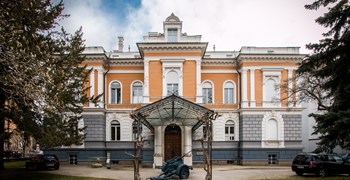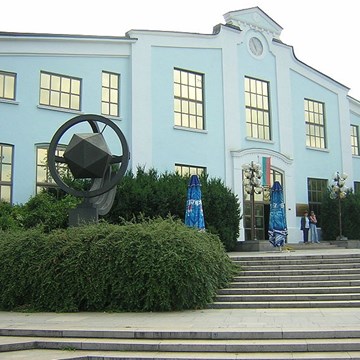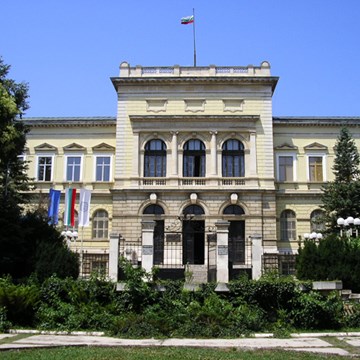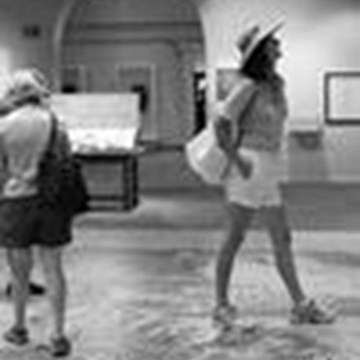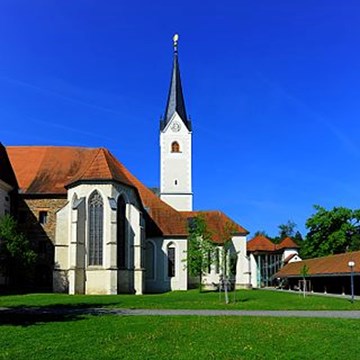Maribor is ours!
After the formation of Yugoslavia, Maribor became an important border city, representing Yugoslavia’s north-western gate into the world. The city became the transport route connecting the Alps and Belgrade as well as the rest of the Balkans on one hand, and Vienna and Trieste on the other hand.
In 1910, Maribor had 27,994 residents living in 1,269 dwellings. In 1921, the number increased to 30,739 residents and 1,455 dwellings in the city. In 1931 when the last census in the Kingdom of Yugoslavia was carried out, Maribor had 33,921 residents, while the number of dwellings had increased to 1,834. A new feature of Maribor’s population between 1918 and 1941 was people from the Primorska region bringing with their character a new air of openness to the Yugoslavian Maribor.
Between January 1919 and April 1921, the city administration in Maribor was managed by governmental commissioners Dr Vilko Pfeifer, followed by Dr Josip Leskovar and Ivo Poljanec. The first municipal elections were called to take place on 26 April 1921. The socialists received the highest number of votes; it was also from their ranks that the mayor Viktor Grčar was elected. Germans from Lower Styria did not participate in the first municipal election in Maribor. The outcome of this election in Maribor and its neighbouring municipalities differed greatly from other Slovenian municipalities.
The second municipal elections were held on 21 September 1924. Clericalists of the Slovenian People’s Party joined the liberals of the Yugoslavian Democratic Party and the National Socialist Party and stood in the municipal elections in Maribor together as the National Block. The party standing in the elections independently was the Domestic Economic Party constituted by the Germans in Maribor. The National Block won thirty-two mandates in this election, while the Germans and the socialist party won four mandates each and the communist labour group won one mandate in the municipal board. Dr Josip Leskovar, a representative of the Slovenian People’s Party, became the new mayor.
The last municipal elections between both World Wars took place in 1927. The Slovenian People’s Party won with fourteen mandates, closely followed by the socialists with twelve mandates. The Yugoslavian Democratic Party won six mandates and the Germans’ Domestic Economic Party won five. On 24 January 1928 the City council elected Dr Alojzij Juvan of the Slovenian People’s Party as mayor. All future mayors and deputy mayors (Dr Alojzij Juvan and Franjo Žebot of the Slovenian People’s Party, Dr Franjo Lipold of the Yugoslavian Democratic Party) were already members of the last elected municipal board.
The City council was dissolved when the royal dictatorship was introduced on 6 January 1929. Already a couple of days later, the lord mayor of the Maribor Region set a new municipal administration with Dr Alojzij Juvan as mayor. Later on, he was followed by a liberal, Dr Franjo Lipold. Throughout the existence of the Kingdom of Yugoslavia, the urban municipality could not take a political stand different from the state level.
The last and major change in the urban municipality member structure occurred in autumn 1935, when the government in Belgrade changed and Dr Marko Natlačen of the Slovenian People’s Party became governor of the Drava Banovina. The majority of city council positions in Maribor were then taken by the clerical party supporters. Once again, Dr Alojzij Juvan was the mayor and Franjo Žebot the deputy mayor.
Administrative development of the urban municipality between 1918 and 1941 was negatively affected by the fact that Maribor, against its will, was the only urban municipality in Yugoslavia to be left within municipality borders as determined by the Municipality Law of 1850. Its suburbs remained independent municipalities.
Exhibitions and events

Shhh! Maribor 1941-1945
Permanent exhibitionShhh! Due to the secret nature of this data, we cannot disclose everything in this invitation, so we'd like you to join us at the opening of our permanent exhibition.
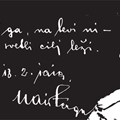
»Na desni ga, na levi ni – pred nami svetli cilj leži«
Permanent exhibitionRazstava prikazuje predvsem boj za slovensko severno mejo na Štajerskem in vzhodnem Koroškem, na ozemlju, ki je bilo konec leta 1918 v Štajerskem obmejnem poveljstvu. Atentat na...

A Monument to Maribor's Industry - Industrial Maribor in the 20'th Century
Permanent exhibitionAlong with its favourable geographical position and advantageous conditions also its electrification contributed to the industrial boom of Maribor and northeastern Slovenia. Namely, the first...

History of Photography
Permanent exhibitionFrom the very beginning, humankind has had the desire to prove themselves and to understand the world surrounding them. Certainly there were moments when people wished to capture a moment in an...
Activities from this museum
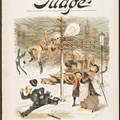
In zasvetila je luč 1883 - Predšolski in I. triada
Kakšno je bilo življenje v Mariboru v tistih časih, ko še ni bilo elektrike?...

Kaj se skriva v muzeju? - Predšolski, 1. triada
Otroci bodo spoznavali delovanje muzeja, slišali zgodbo o zgodovini muzejske...

Dišijo praznične dobrote
Na delavnicah predstavljamo del kulturne dediščine, ki se skozi stoletja...
